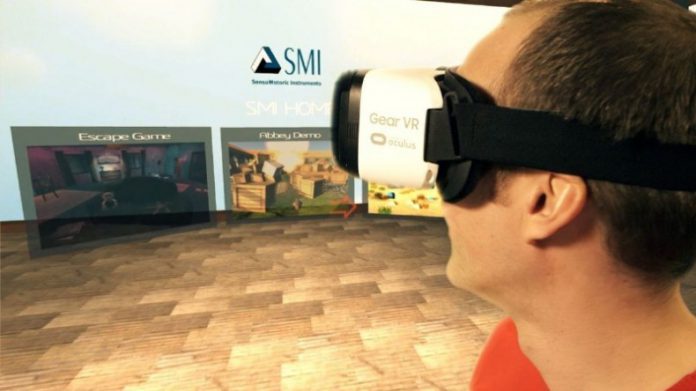The SIGGRAPH Computer Graphics and Interactive Techniques Conference and Exhibition 2016 takes place in a few days time, and just as previous years it looks to feature a sizeable array of virtual reality (VR) technology. Today computer graphics giant NVIDIA, has announced a partnership with SensoMotoric Instruments (SMI) to use its eye tracking technology for a demo on foveated rendering for VR at the event.
Foveated rendering is a process where software renders only the part of an image that the user is focusing on, in full resolution, while the other parts of the images are rendered at a lower quality. This helps to reduced the burden on graphic cards, but it can only be implemented and tracked by eye tracking sensors.
So for its demo NVIDIA has chosen SMI eye tracking to power its perceptually-based foveated rendering technique, this is because of the benefits SMI’s 250 Hz eye tracking and super low latency bring to the project NVIDIA states.
“The demonstration wouldn’t be possible without our partners at SMI, who have added their eye tracking to the HTV Vive we are using in this demo,” said NVIDIA Vice President of Research Dr David Luebke. “The quality of the physical integration, and especially the quality of the eye tracking data that SMI delivers, has been key to the development of our perceptually-based foveated rendering techniques.”
“We are in a position to partner with NVIDIA not just because we have mastered eye tracking for VR at 250 Hz but because of the industry-best and consumer-ready algorithms SMI has developed over more than two decades,” said SMI’s Director of OEM Solutions Business Christian Villwock. “We have long believed that eye tracking will be part of next-generation virtual reality headsets not just because of the benefits of foveated rendering, but because it enables personal display calibration, barrier-free natural interaction, social presence and yields valuable analytical insights”.
VRFocus will be at SIGGRAPH 2016 to bring you the latest announcements from the show.















